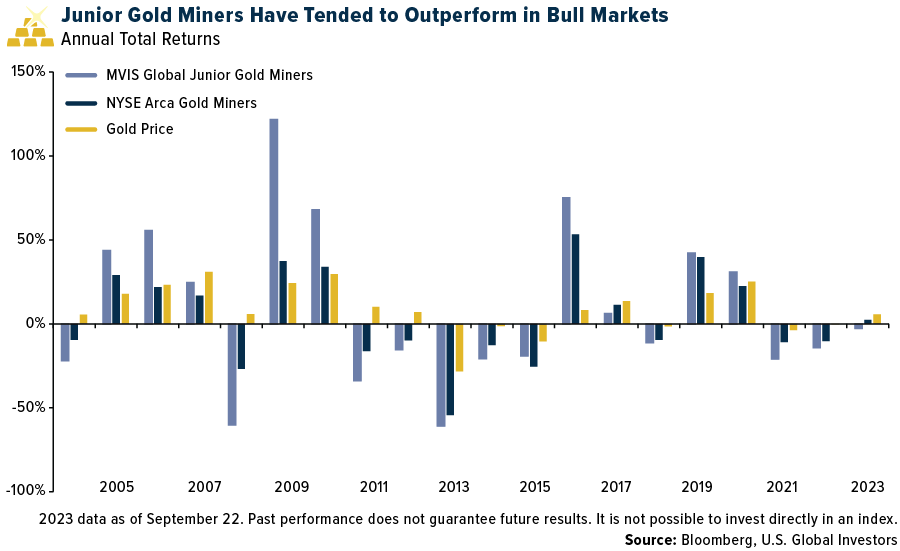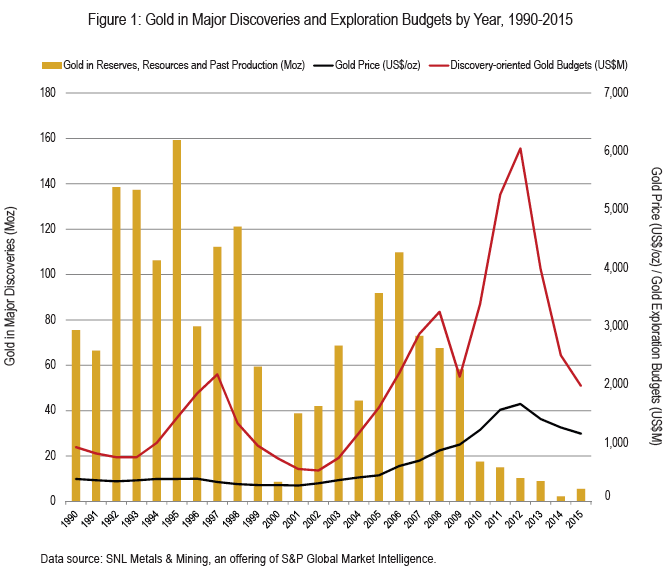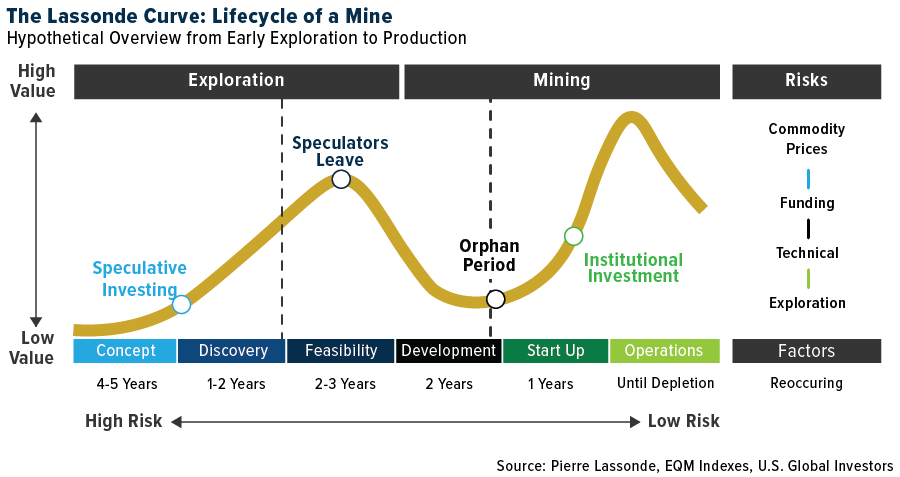Investing in the dynamic world of junior gold mining companies can be both exhilarating and daunting. With this comprehensive guide, we aim to provide investors with a better understanding of the risks and rewards associated with such ventures. Whether you’re a seasoned investor or exploring opportunities in the gold sector, navigating the unique landscape of junior mining demands careful consideration.
Understanding Junior Gold Mining Companies
Understanding it is pivotal for investors venturing into the dynamic world of precious metal investments. Unlike their larger counterparts, junior mining companies are characterized by their focus on exploration and development rather than large-scale production. These companies seek to discover new gold deposits and advance their projects to the production stage. While junior miners often operate with higher risk profiles due to their exploration-centric nature, they also offer significant growth potential. Investors need to grasp the unique challenges these companies face, such as securing funding for exploration, managing operational risks, and navigating the complexities of the permitting process. In essence, a thorough research of junior gold mining companies is essential for investors aiming to leverage the potentially high returns associated with early-stage exploration and development projects along with carefully managing the inherent risks.
Potential Rewards of Investing in Junior Gold Miners
Investing in junior gold miners presents an exciting prospect for potential rewards. These companies are often engaged in exploration and development and offer investors the allure of high returns, driven by the discovery and development of new gold deposits. The potential for substantial gains lies in the exploration upside, where successful identification and advancement of promising projects can significantly enhance a company’s valuation. Junior gold miners may become acquisition targets by larger mining companies seeking to expand their reserves. Additionally, the growth opportunities associated with successful exploration and development projects can lead to increased production and improved financial performance.
Growth Opportunities and Exploration Upside
It forms the heart of the appeal when investing in junior gold mining companies. The exploration upside represents the potential for significant growth as these companies discover and develop new gold deposits. They are often at the forefront of exploration activities, targeting regions with unexplored and/or underexplored geological potential. Successful exploration not only increases a company’s resource base but also enhances its valuation and attracts investor interest. The exploration upside also creates opportunities for strategic partnerships and acquisitions, where larger mining companies may seek to capitalize on promising projects. Moreover, the discovery of additional mineralization within existing projects can extend the life of a mine, further contributing to the growth prospects of junior gold miners. For investors with an appetite for risk and an eye for potential rewards, it couldn’t get any better than this.

Key Risks Associated with Junior Gold Mining Investments
Let us try to underscore the complexities that investors must take into consideration in this high-potential, high-risk sector. Market volatility poses a significant risk, as junior gold miners are particularly sensitive to fluctuations in gold prices and global economic conditions. Operational risks, including technical challenges, project delays, and unforeseen geological complexities, can impact the viability of mining projects. Financing challenges are common, with junior miners often reliant on external funding for exploration and development, exposing them to funding uncertainties and potential dilution of shareholder value. Sometimes liquidity concerns may arise, given the smaller market capitalization of junior mining stocks, making them more susceptible to price swings. Additionally, regulatory and permitting issues can impede project advancement. Investors need to be acutely aware of these risks, conduct thorough due diligence to mitigate potential pitfalls, and make informed decisions based on research.

Due Diligence: Evaluating Junior Gold Mining Companies
Conducting thorough due diligence is a critical step for investors considering involvement in junior gold mining stocks. Rigorous due diligence is essential to assess the potential risks and rewards associated with individual companies. Key financial metrics, such as the company’s balance sheet, cash flow, and debt levels, provide insights into its financial health and ability to weather market fluctuations. Exploration and resource metrics, including the quality and size of gold deposits, are crucial indicators of a company’s growth potential. Management expertise and experience, as well as a track record of successful project execution, are additional factors to consider. Make sure to read and research them all. Get yourself familiar with the company’s operational strategy, risk management practices, and adherence to environmental and social standards. Furthermore, evaluating the geopolitical landscape of the regions where the company operates can uncover potential regulatory and political risks. By meticulously examining these key metrics and factors, investors can make informed decisions, minimizing risks, and optimizing their chances for success through junior gold mining stocks.
Strategies for Success in Junior Gold Mining Investments
Some strategies are essential for investors aiming to overcome the unique challenges and capitalize on the potential rewards within this high-risk and high-return sector. Diversification is a fundamental strategy, spreading investments across multiple junior mining companies to mitigate the impact of any single investment’s underperformance could prove to be an insurance that can come in handy. Staying informed about industry trends, gold market dynamics, and global economic conditions is also crucial for making well-timed and informed investment decisions. Setting realistic expectations and having a long-term perspective is a must, as junior gold mining investments may require patience for projects to advance from exploration to production stages. This is not a get-rich-quick scheme which could make you a millionaire overnight. Engaging in active portfolio management, regularly reassessing the risk-reward profile of each investment, and adjusting the portfolio accordingly can balance the risk-reward ratio in your favor. Collaborating with experienced advisors and leveraging their insights can also provide valuable guidance in navigating this sector. Ultimately, a comprehensive implementation and adaptive approach that integrates these strategies can enhance the likelihood of success and mitigate potential risks. Armed with knowledge, investors are likely to succeed in their junior gold mining endeavors.

Case Studies: Success Stories of Some Junior Miners
Success stories illuminate the triumphs of companies that effectively navigated challenges, executed successful exploration projects, and significantly increased shareholder value. Analyzing these cases provides investors with a blueprint for identifying key success factors, management strategies, and project execution practices that contribute to positive outcomes.
- Kirkland Lake Gold (TSX: KL): This company faced the challenge of maintaining its high-grade production and low-cost operations in the face of declining gold reserves and increasing environmental and social pressures. It overcame this challenge by acquiring Detour Gold, a lower-grade but long-life asset, in 2020, which diversified its portfolio and increased its reserve base. It also invested in innovation and technology to improve its operational efficiency and sustainability.
- Wesdome Gold Mines (TSX: WDO): They faced the challenge of expanding its resources and reserves at its flagship Eagle River Complex in Ontario, Canada which had limited exploration potential and high operating costs. Then they discovered new high-grade zones at depth and along strike, which increased its resource base and extended its mine life. It also optimized its mining methods and processing facilities to reduce its operating costs and thus increase its margins.
- Gran Colombia Gold (TSX: GCM): This one faced the challenge of dealing with social unrest and security issues at its operations in Colombia, which affected its production and profitability. It overcame this challenge by engaging with the local communities and stakeholders and implementing social and environmental programs to improve its reputation and relationships. It also diversified its assets by acquiring Gold X Mining, which gave it access to the Toroparu project in Guyana, one of the largest undeveloped gold deposits in the Americas.
Case Studies: Challenges Faced by Some Junior Miners in Past
Some cautionary tales also shed light on the pitfalls and setbacks faced by junior gold mining companies in the past. These cases offer lessons to be learned from those challenges such as operational mishaps, funding difficulties, and geopolitical obstacles. Studying these scenarios enables investors to recognize red flags, understand the consequences of certain decisions, and incorporate risk mitigation strategies into their own investment approach.
- Rubicon Minerals (TSX: RMX) (OTCQX: RBYCF): This company faced the challenge of developing its Phoenix Gold project in Ontario, Canada, which had a high-grade resource estimate of 4.9 million ounces of gold. However, it encountered several technical and operational issues, such as inaccurate geological modeling, poor ore recovery, and high dilution. It also ran out of cash and had to suspend its operations and restructure its debt in 2016. It eventually sold the project to Battle North Gold in 2020 for C$343 million, which was a fraction of its previous market value.
- Banro Corporation (TSX: BAA): Then this company had the challenge of operating in the Democratic Republic of Congo (DRC), a high-risk jurisdiction with political instability, security threats, and social conflicts. It had four gold projects in the country, with two in production and two in development. However, it faced multiple attacks by armed groups, kidnappings of its staff, illegal mining activities, and community protests. It also struggled with debt and liquidity problems and defaulted on its obligations in 2017. It filed for bankruptcy protection in 2018 and sold its assets to Shomka Resources and Baiyin International Investments for $61 million.
- Colossus Minerals(TSX: CSI): They were advancing their Serra Pelada project in Brazil, a high-grade gold-platinum-palladium deposit. However, it encountered significant engineering and environmental difficulties, such as flooding, ground instability, and permitting delays. It also faced financial and legal troubles and failed to secure sufficient funding to complete the project. It filed for creditor protection in 2014 and sold its interest in the project to Sandstorm Gold for $1.5 million.
In conclusion, investing in junior gold mining companies offers a unique set of challenges as well as rewards. By understanding the whole scenario, conducting proper due diligence, and implementing strategic approaches, investors can position themselves for success in this exciting sector. It does require a judicious balance of risk-taking and good decision-making. Therefore investors should adopt a multifaceted approach. However, for those who approach this sector with due diligence and a good understanding of it, the potential for substantial rewards is undeniable.
As you embark on your journey into the world of junior gold mining investments, use this guide as a valuable resource to navigate the complexities through ups and downs and make informed decisions for your investment portfolio.
Sources Used For Case Studies:
https://www.bullionvault.com/gold-news/junior-gold-031020142
https://explorationinsights.com/free-content/articles/fatal-flaws-in-the-junior-mining-sector/
https://www.stern.nyu.edu/sites/default/files/assets/documents/uat_024307.pdf

